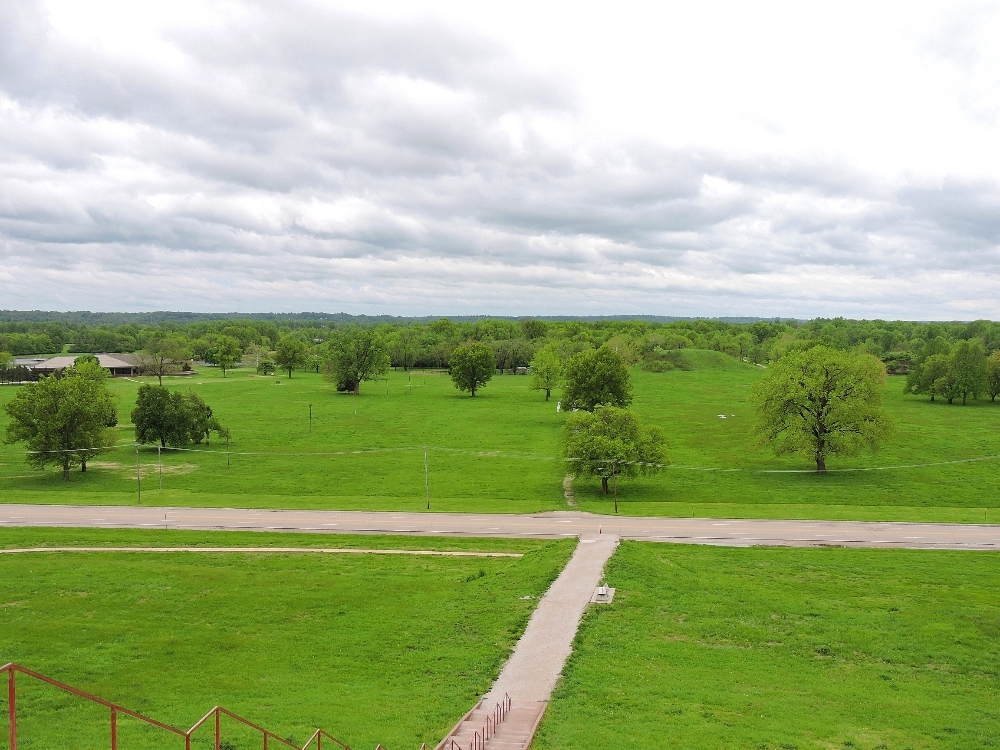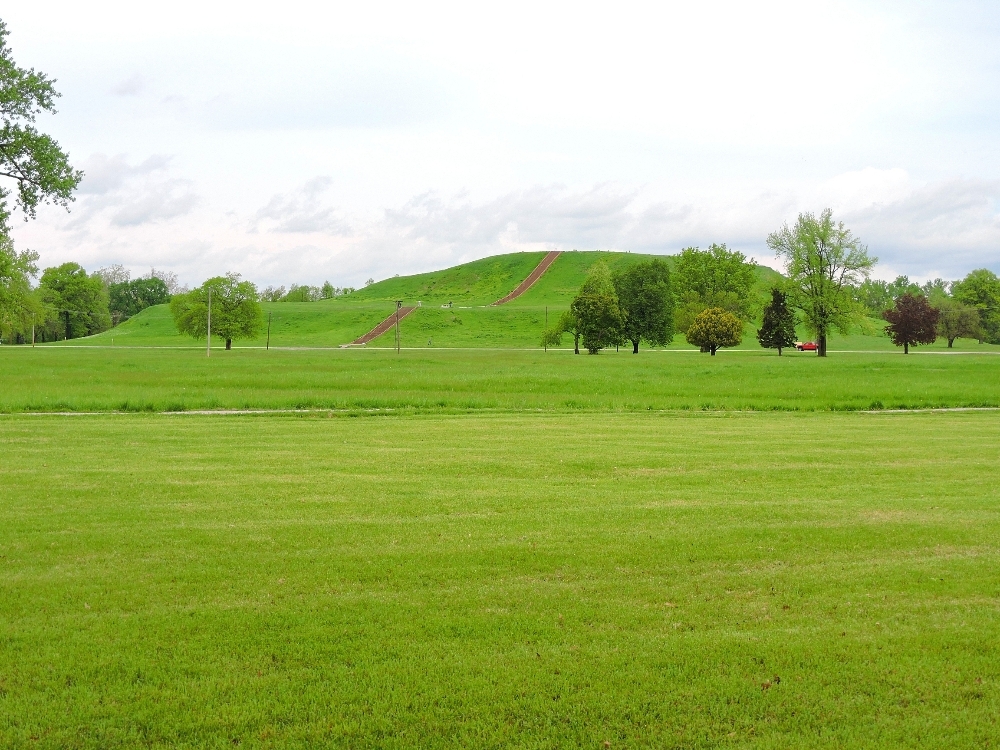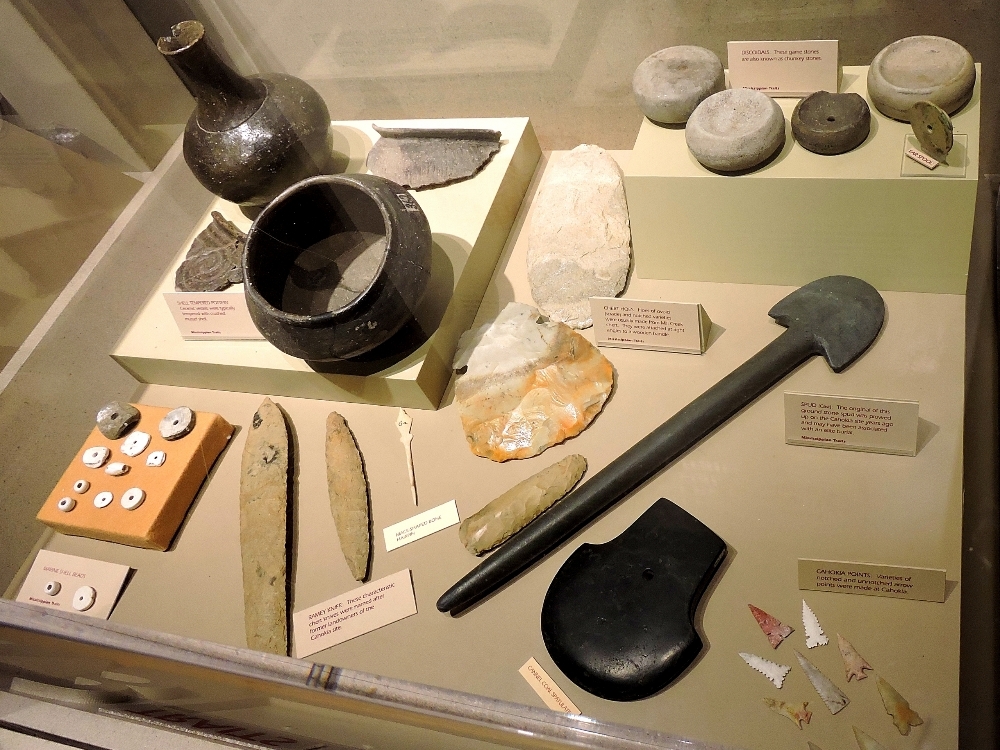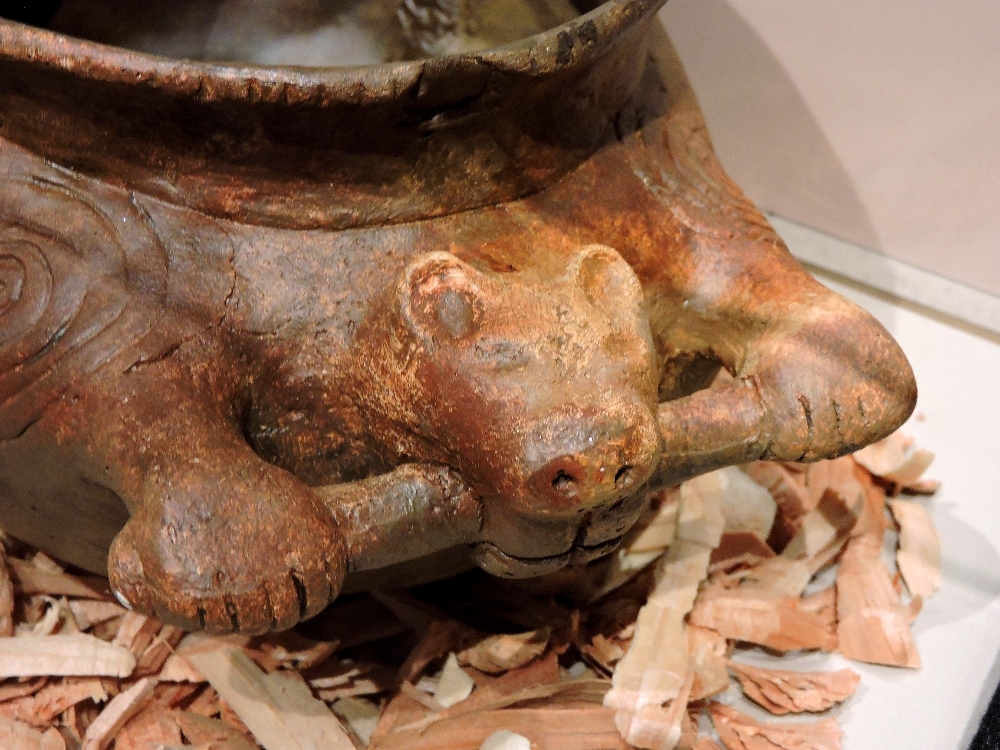I have long thought that in the unlikely event that someone were to create a Time Machine, and it was made available to me, one of the five places I would use it to visit would be North America prior to 1492. If I were able to do that, there would be no better place to see than the center of the Mississippian culture, a place known today as Cahokia. The Mississippians created a complex society with an urban component that included large settlements incorporating large, human-built earthen mounds. This society arose around 1,200 years ago, flourished for a few hundred years, and then declined before European contact.
Today the Cahokia Mounds State Historic Site, in Illinois just east of St. Louis, preserves the location of the largest of these cities and is also a World Heritage Site. It must be said, however, that to truly appreciate this site requires a certain amount of imagination. As you might expect, the only visible remnants of the mostly wood-built city, the mounds, can easily be confused with ordinary hills. Indeed many of the hundreds of mounds scattered around the Central-South United States have been victims of such an erroneous classification. At Cahokia, however, decades of investigations have confirmed that the collection of mounds found in this area were part of a city that once housed tens of thousands of residents, making it the largest pre-contact city in America north of Mexico, and likely the most important settlement of the Mississippian Culture.
Walking the trails through the site in the spring was a splendidly beautiful experience, but the natural dominance of the native flora there made it difficult for me to comprehend what the area would have looked like when the city still existed. As you can see in the image below, the mounds tend to disappear into the lush greenery covering the landscape (if you look carefully, you can see one of the smaller mounds towards the right side of the image.)

The one feature that could never have been misinterpreted as a natural hill is the centerpiece of the site, and the most important location in the ancient city, Monk’s Mound. Named for a group of French Trappist Monks, who lived there in the early 1800s, the mound’s perimeter is longer than that of the Pyramid of the Sun at Teotihuacan, and similar to that of the Great Pyramid at Giza, though the mound is not as tall as either of those structures. The flattened levels of the mound would have been topped with wooden buildings, presumably involved with some important function, but, of course, those are long gone. Today, climbing the modern staircase to the top simply gives a nice view of the site as a whole, and also of distant St Louis.

Visiting Cahokia would be a rather inadequate experience were it not for the presence of the excellent interpretive center. Many interesting details about the life of the Mississippians are presented there, as well as thoughts about the many aspects of their society which still remain unknown. The collection of artifacts found at Cahokia, and some other Mississippian sites, is particularly interesting.

I am always fascinated by ancient American ceramics, and this is the first time I have seen examples of items from the eastern part of the continent. Similarities in styles with the pieces made by other cultures are apparent, though the amount of coloring and decoration is noticeably less compared to pottery from further west or south. The items are not entirely dull, however, and I especially enjoyed this pot, which includes a figure of a beaver chewing through a piece of wood.

I very much enjoyed my visit to Cahokia, and I would have liked to have stayed a little longer to hike some of the longer trails at the site, which would have been excellent birding locations. As it was, even with a fairly short visit, I saw a couple of new species, which I will present in another post.